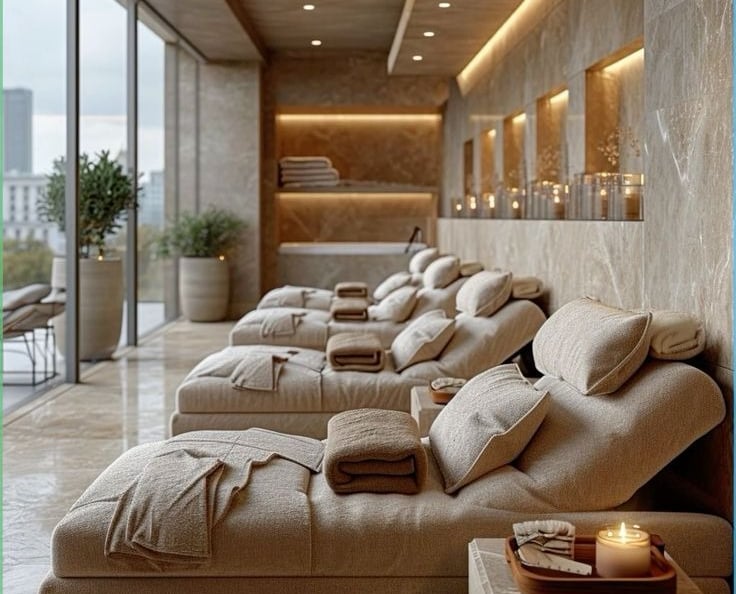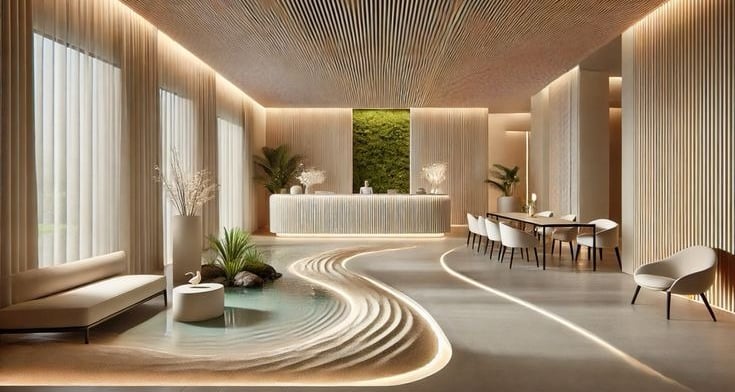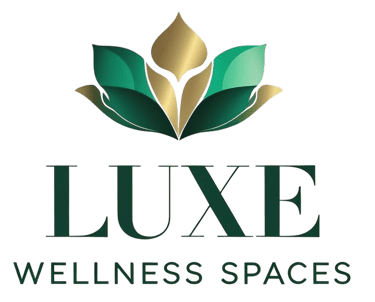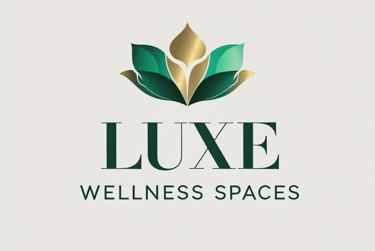How Luxury Wellness Spaces Drive Revenue Through Experience Architecture
Strategic wellness space design drives 23% higher guest spending and 18% better retention. Learn how luxury spa environments create revenue through psychology-based design, biophilic elements, and flexible layouts that justify premium pricing.
Daryn B
6/26/20253 min read


The wellness industry has reached an inflection point. With global spa revenues exceeding $128 billion annually, operators can no longer rely solely on traditional treatments to differentiate their offerings. Today's discerning clientele expects transformative environments that justify premium pricing and foster long-term loyalty.
The Economics of Experience Design
Revenue optimization in wellness spaces begins with understanding guest psychology. When clients invest $200-500 in spa experiences, they're purchasing more than services—they're buying emotional transformation. Smart operators recognize that physical environments directly influence spending behavior, treatment satisfaction, and return visit frequency.
Consider the financial impact: properties that invest in thoughtfully designed relaxation areas report 23% higher per-guest spending and 18% better retention rates compared to traditional facilities. The initial design investment typically pays for itself within 18-24 months through increased bookings and premium service uptake.
Strategic Space Planning for Maximum ROI
Modern wellness design demands flexibility. Multi-purpose areas that seamlessly transition between functions maximize revenue per square foot. Relaxation lounges can host morning meditation classes, afternoon couples treatments, and evening wellness consultations—essentially tripling utilization without expanding footprint.
The key lies in creating zones rather than rigid rooms. Open-concept designs with moveable elements allow operators to adapt spaces based on demand patterns, seasonal variations, and special programming needs.
The Psychology of Luxury Perception
Guests make value judgments within seconds of arrival. Strategic design elements communicate quality and justify pricing before any service begins. Floor-to-ceiling windows suggest expansiveness and premium positioning. Natural materials like stone and wood trigger subconscious associations with high-end hospitality.
Lighting deserves particular attention—it's perhaps the most cost-effective luxury signal. Layered lighting systems that adjust throughout the day create dynamic environments that feel alive and responsive. This attention to detail translates directly into guest willingness to pay premium rates.
Biophilic Design as Business Strategy
Incorporating natural elements isn't just aesthetic—it's neurological marketing. Research demonstrates that biophilic design reduces cortisol levels by up to 15% and increases positive mood indicators by 38%. For wellness operators, this translates into guests who stay longer, purchase more retail items, and book follow-up treatments.
Simple additions like living walls, water features, or strategically placed plants create measurable improvements in guest satisfaction scores. More importantly, they extend average dwell time, providing additional opportunities for upselling and cross-selling.
Technology Integration Without Disruption
The most successful wellness spaces incorporate technology invisibly. Hidden speakers deliver precisely calibrated soundscapes. Climate control systems maintain optimal temperature and humidity without obvious vents or controls. Charging stations blend seamlessly into furniture design.
This invisible integration supports the primary goal: creating environments where guests feel completely disconnected from daily stressors yet remain subtly connected to amenities that enhance their experience.
Measuring Success Beyond Aesthetics
Effective wellness design requires metrics beyond Instagram likes. Track key performance indicators including average treatment room utilization, retail sales per guest, rebooking rates within 90 days, and Net Promoter Scores specific to facility experience.
Leading operators also monitor dwell time in relaxation areas, as extended stays correlate strongly with increased ancillary spending and positive reviews. Heat mapping technology can reveal how guests naturally move through spaces, informing future design decisions.
Implementation Roadmap
Start with high-impact, cost-effective changes. Lighting upgrades and strategic furniture placement can dramatically alter space perception without major construction. Add biophilic elements gradually, measuring guest response to each addition.
For larger renovations, consider phased approaches that maintain revenue continuity. Redesign one area completely, measure results, then apply successful elements throughout the facility.
The Competitive Advantage
In an increasingly crowded wellness market, exceptional design creates sustainable differentiation. While competitors can replicate treatment menus and pricing strategies, they cannot easily duplicate the emotional connection guests develop with thoughtfully crafted environments.
Properties that invest in strategic experience design don't just attract more guests—they attract guests willing to pay more, stay longer, and become vocal advocates. In today's experience economy, your physical space isn't just where business happens—it's how business grows.
The future belongs to wellness operators who understand that every design decision is ultimately a revenue decision.


About The Author
Daryn Berriman is the Founder and Principal Consultant of Luxe Wellness Spaces, a consulting-led studio blending operational expertise and design excellence to create wellness businesses that perform, and spaces that guests love.


